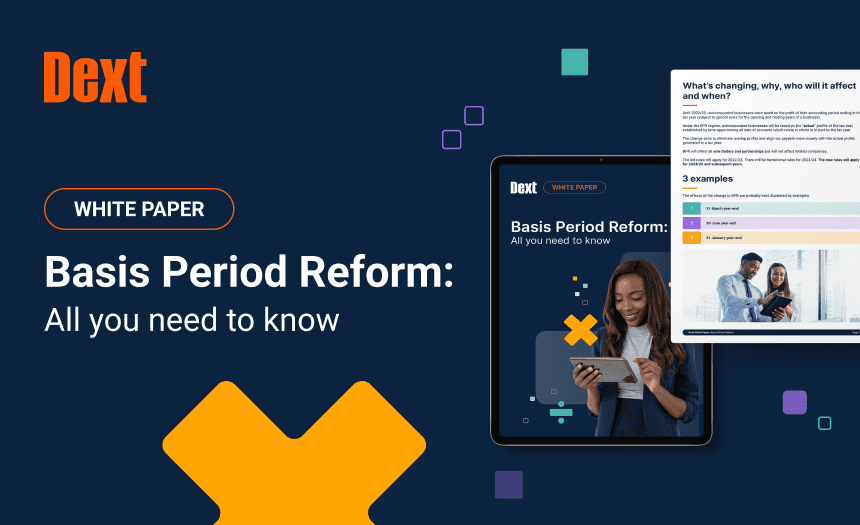Basis Period Reform (BPR) is coming into full effect from 2024/25. To help you navigate this change, our experts have put together all the information you need including what is changing, who it will affect and when.
The basis period reform (BPR) alters how unincorporated businesses are taxed. While seen by HMRC as a simplification, many businesses may face added complications. For those seeking a deep dive, we offer a comprehensive guide which we’ve summarised here.
What’s New with BPR?
Historically, until the tax year 2022/23, these businesses were taxed based on the profit of their accounting period ending in the respective tax year. This, however, is set to change. Under the BPR, businesses will be taxed on the “actual” profits of the tax year, determined by time-apportioning all accounts relating — in whole or in part — to that tax year. This shift aims to eliminate overlap profits and ensure that tax payable aligns more with the actual profits of a tax year.
The reform impacts sole traders and partnerships. However, limited companies remain unaffected. Transitioning to the new rules will involve specific regulations for the years 2022/23 (old rules), 2023/24 (transitional rules), and 2024/25 (new rules).
Practical Examples of BPR Impact
To get a clearer understanding of the BPR, consider the following scenarios:
- 31 March year-end business: Businesses with their year-end on 31 March or 5 April will not see any changes in how their profits are assessed for 2022/23, 2023/24 or 2024/25.
- 30 June year-end business: The transitional year, 2023/24, presents a mix of factors affecting taxable profits. By 2024/25, they will be taxed on the proportion of profits spanning two years.
- 31 January year-end business: This scenario comes with a unique challenge. By the tax return deadline in January 2026, businesses will lack the year’s exact profit figures, prompting estimates.
Transition Challenges
The transition year, 2023/24 involves several key elements which will require careful handling. Detailed calculations of the transitional year can be found on our Basis Period Reform whitepaper.
Future Implications
BPR also intersects with Making Tax Digital (MTD). There are discrepancies in how the quarters are aligned between the MTD ITSA and the new BPR rules. This could add another layer of complexity and hinder accurate tax estimates.
Furthermore, while there’s no immediate change to tax payment dates, the alignment of tax due with actual profits suggests potential adjustments later on.
Lastly, it’s essential to remember that the BPR primarily affects sole traders and partnerships. Each partner will need to calculate their tax position using their individual overlap profits.
With so many intricacies to the process, it’s clear that clarity and simplification can become our best allies. At Dext, we offer tools to streamline accounting processes — and to further assist, we’ve thoughtfully written a guide to help you navigate the BPR, ensuring a smoother path for all those involved.
